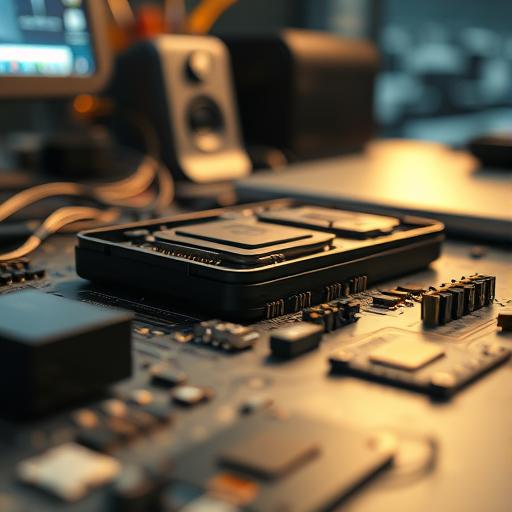Imagine a smartphone that unfolds into a tablet, a laptop that slips into your pocket, or a television that rolls up like a poster. These aren’t mere fantasies but tangible possibilities of foldable technology, a field that’s rapidly reshaping the gadgets we use daily. As innovation pushes the boundaries of flexible displays and durable materials, foldable devices are evolving from niche curiosities to mainstream contenders. This blog post delves into the transformative potential of foldable technology, its current state, and the hurdles it must overcome to redefine the tech landscape.
What Are Foldable Technology Gadgets?
Defining Foldable Devices
Foldable technology gadgets are electronic devices equipped with screens made of flexible materials that can be folded, rolled, or bent to change form and size. These devices blur the line between different product categories, offering versatility in both design and function. Examples include foldable smartphones like the Galaxy Z Fold, dual-screen foldable phones such as the Microsoft Surface Duo, and rollable TVs like LG’s Signature OLED R.
How Foldable Technology Works
At the core of foldable devices are flexible OLED displays, which allow screens to bend without compromising image quality. Precision-engineered hinges and reinforced materials like ultra-thin glass or polymer layers ensure the device’s structural integrity. However, creating a foldable gadget involves overcoming challenges such as preventing screen creases, ensuring long-term flexibility, and maintaining device performance under repeated use.

The Evolution of Foldable Technology
Early Innovations in Foldable Devices
The journey of foldable technology began with early prototypes in the 2010s, including Samsung’s 2013 Galaxy Round and the first foldable concepts from LG. These initial attempts faced limitations in durability and usability but laid the groundwork for future breakthroughs. By 2019, Samsung’s Galaxy Fold and Huawei’s Mate X marked the dawn of commercial foldable devices, proving the concept’s feasibility.
Current State of Foldable Technology
Today, the market is dominated by smartphones, with the Samsung Galaxy Z Fold and Z Flip leading the charge. Foldable laptops, like the Lenovo ThinkPad X1 Fold, and rollable displays, such as LG’s modular TV, have also emerged. Despite their novelty, these devices are increasingly refined, with improved hinge designs and screens that can withstand thousands of folds per day.
The Benefits of Foldable Technology
Enhanced Portability and Convenience
Foldable gadgets cater to the modern demand for compact yet functional devices. A foldable smartphone, for instance, offers a phone-sized form when closed and a tablet-sized screen when open, eliminating the need to carry multiple devices. This dual-purpose design is especially beneficial for users seeking space-saving solutions without compromising on screen real estate.
Improved User Experience
These devices excel in multitasking. With split-screen capabilities, users can run multiple apps simultaneously, stream videos while browsing, or take notes alongside web searches. In gaming and productivity, larger screens provide immersive experiences, while portable modes ensure mobility. Foldable laptops and tablets further enhance workflow flexibility for professionals on the go.

Sustainability and Innovation
Foldable technology has the potential to reduce electronic waste by merging functionalities into a single device, decreasing the number of gadgets discarded annually. Additionally, the sector drives innovation, pushing manufacturers to develop cutting-edge materials and manufacturing techniques that could extend beyond foldables into the broader tech industry.
Challenges and Limitations of Foldable Technology
Durability Concerns
One of the biggest criticisms of foldable devices is their fragility. Early models faced issues with screen scratches and hinge malfunctions. While newer iterations use reinforced cover layers and self-healing polymers, long-term durability remains a concern. Manufacturers are investing heavily in testing to ensure these gadgets withstand daily wear and tear.
High Costs and Market Accessibility
Foldable devices remain premium-priced, with flagship models costing between $1,500 and $3,000. This restricts their reach to a niche market of early adopters. To expand accessibility, companies are exploring cost-effective production methods and mid-range models. As demand grows, economies of scale may eventually drive prices down, making foldables more mainstream.
Software Optimization
Hardware isn’t the only challenge. Software must adapt to dynamic screen sizes, requiring developers to design apps that function seamlessly on both folded and unfolded modes. Operating systems like Android and Windows are gradually improving support, but inconsistencies in app usability persist, limiting the full potential of these devices.
The Future of Foldable Technology Gadgets
Emerging Trends in Foldable Tech
The future promises even more imaginative designs. Rollable screens for laptops and televisions are already in development, while foldable wearables—like smartwatches that expand into smartphone-sized displays—hint at a more integrated lifestyle. Innovations in materials, such as graphene-based screens, could make foldables lighter, more durable, and resistant to damage.
Integration with Other Technologies
Foldable gadgets will likely merge with AI, IoT, and 5G to unlock new applications. Imagine a foldable AR headset that adjusts its display based on your environment or a foldable tablet used in classrooms for interactive learning. In healthcare, flexible screens could enable wearable monitors that adapt to a patient’s body shape, enhancing diagnostic capabilities.
Market Growth and Predictions
Industry reports project the global foldable technology market to grow from $10 billion in 2023 to over $30 billion by 2030, driven by falling production costs and rising consumer curiosity. As technology matures, foldables could transition from luxury items to everyday essentials, particularly in sectors valuing portability and adaptability.

Conclusion
Foldable technology is more than a gimmick—it represents a paradigm shift in how we interact with digital devices. While challenges like cost and durability persist, the pace of innovation suggests these hurdles will be overcome. In the coming decade, foldables may become as common as smartphones today, revolutionizing everything from communication to entertainment. The question isn’t if foldable tech will change our lives, but how quickly we’ll embrace the fold.
FAQ Section
1. What are the most popular foldable devices available today?
Leading foldable gadgets include:
- Samsung Galaxy Z Fold 5: A flagship foldable smartphone with a large tablet-like display and improved hinge technology.
- Microsoft Surface Duo 2: A dual-screen foldable phone designed for productivity with a unique clamshell form.
- Huawei Mate X3: A foldable smartphone with a seamless outward-folding screen and a sleek, premium build.
- LG Signature OLED R: A rollable TV that retracts into a base unit, offering customizable screen sizes.
2. Are foldable devices durable enough for everyday use?
Early models faced durability issues, but recent advancements have significantly improved their resilience. Manufacturers now test units for tens of thousands of folds and use protective layers to shield screens from scratches. While no foldable is entirely indestructible, many are now built to handle daily use with care, making them more viable for the average consumer.
3. Will foldable technology replace traditional smartphones and tablets?
Foldables are unlikely to fully replace traditional devices in the near future but may coexist as specialized alternatives. Their larger screens and multitasking capabilities appeal to users who prioritize versatility, while traditional devices remain cost-effective and practical for others. The market is expected to diversify, offering both form factors to meet different needs.
4. How expensive are foldable technology gadgets compared to regular devices?
Comparison table for 4. How expensive are foldable technology gadgets compared to regular devices?
Foldables command a premium, often costing 50-100% more than their non-foldable counterparts. For example, the Samsung Galaxy Z Fold 5 starts around $1,800, while a regular Galaxy S24 ranges from $700 to $1,100. As production scales, prices are expected to drop, but foldables will likely remain a premium segment for the foreseeable future.
5. What advancements can we expect in foldable technology in the next 5 years?
Future innovations may include:
- More robust and thinner materials, like graphene, to enhance flexibility and durability.
- Seamless, crease-free screens with improved pixel density and responsiveness.
- Lightweight, foldable wearables such as smart glasses or hybrid phone-watch devices.
- Better software ecosystems with foldable-optimized apps and adaptive OS features.
These advancements could make foldables more practical, affordable, and integrated into daily life.
